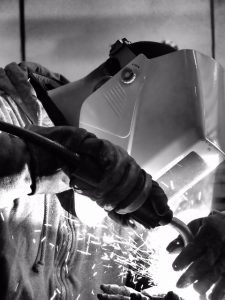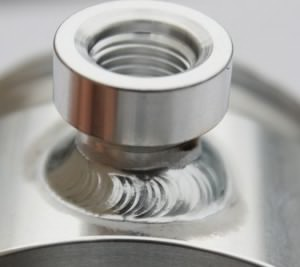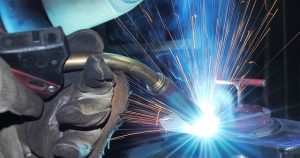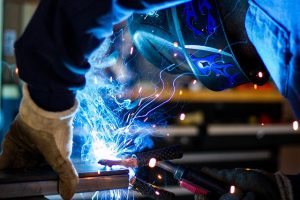A Complete Guide To Buying Orbital Welding Equipment
Orbital welding is an economical and viable method for connecting stainless steel tubing, particularly in applications in which high performance, maximum leak integrity, ultra cleanliness, and vibration resistance is of utmost importance. It is not a surprise, then, that more and more companies are opting for this system to get their jobs done. If you are considering orbital welding, it is important to remember that not all systems are alike. You can take steps to make sure that the selection of equipment that will meet your specific needs while maximizing efficiency and productivity.
Choose The Right Orbital Welding System
Remember that price is not the primary determinant of whether an orbital welding system is right for your application. There is not much difference in price among orbital welding systems, but the capabilities of every system can be very different. An orbital welding system is a capital investment. Determine if the system is designed in a manner that allows for modifications, like the acceptance of new software. It is important that you study what every system can offer; you would not want to invest on something that renders itself obsolete after just a few years. For one, you need to make sure that that you get systems with the best features, or those that suit your needs best. Below are some capabilities to consider when getting orbital welding equipment sale:
system is right for your application. There is not much difference in price among orbital welding systems, but the capabilities of every system can be very different. An orbital welding system is a capital investment. Determine if the system is designed in a manner that allows for modifications, like the acceptance of new software. It is important that you study what every system can offer; you would not want to invest on something that renders itself obsolete after just a few years. For one, you need to make sure that that you get systems with the best features, or those that suit your needs best. Below are some capabilities to consider when getting orbital welding equipment sale:
Factors To Consider When Buying Orbital Welding Equipment
• Mobility: There are some systems that are compact and lightweight, while others are bulkier. If you need to move into tight spaces or travel, go for the lighter weight model, so you can quickly and easily move from one job to another.
• Power: Consider input and output capacities: Some systems output 100 amps from a 110 V/20 amp line. Others require a 110 V/30 amp line to create the same 100 amp output. If you use traditional power sources and want to avoid upgrades, get systems that can be powered by 110 V/20 amp lines.
• Weld head and fixturing flexibility: In orbital welding tubes to fittings or tube to valves or similar combinations, you want a system in which the weld heads and fixtures can easily be adapted for a quick setup change. There are some fixtures that can be taken apart and reconfigured to accommodate a range of weld setups. Detachable fixtures and remote controls allow joints to be pre-positioned and allow orbital welding to be done in tight places.
• Programming: There is a program or procedure that should be developed for every weld type. These programs need to be adjusted and stored to accommodate variations in material heats. If your application at any time requires extensive weld programs, get a system with technology that makes the programming process simpler. A system that is user-friendly can allow programs to be built in an accurate and consistent manner via auto-generation capabilities. These reduce human error and shave up to 90 minutes off the time devoted to building programs.
• Documentation: The process of documentation can be time consuming and expensive. Detailed weld logs should be kept, and the information usually is entered in databases. Get a system that automatically logs and stores data for easy transfer and retrieval to databases. This reduces the cost and time of documentation.
• Data management: Data management features enhance greatly the ability to track trends, calculate costs per weld and review production rates. This can go a long way to improving bid accuracy, lowering costs and improving efficiency.
Maintenance and serving programs are just as important as the equipment itself. If something should go wrong, you would be want to be forced into huge downtime because of the responsiveness issues of the manufacturer. See if a supplier has a local network of service providers, giving easy access to replacement equipment and maintenance. See if the manufacturer gives backup equipment for free. Training, which improve orbital welding protocol and play a role in getting weld consistency, is another important consideration. Training programs from equipment supplies can vary. Some focus on how to give genuine orbital welding courses, while others on learning the usage of the controls of a particular type of equipment.
Go For Orbital Welding
In conclusion, make sure that you do your homework before and during the selection process. If you focus your sights on these areas, you can maximize performance and achieve high quality, repeatable welds on a consistent basis. Choosing pro fusion welding equipment can have a direct effect on whether compliance is achieved in the most efficient, productive and cost-efficient manner. Most importantly, ensure that you choose a reputable company or manufacturer from where you will buy your equipment.




 You MUST Ask BEFORE Hiring a Welding Company – So You Can Avoid Wasting Your Time AND Hard-Earned Dollars”
You MUST Ask BEFORE Hiring a Welding Company – So You Can Avoid Wasting Your Time AND Hard-Earned Dollars” 
Keep in Touch